The Amish and Deer Farming
The Coshocton Tribune and Indianapolis Star recently published a series of stories on the deer farming industries in Ohio and Indiana. Amish people figure prominently in a number of the articles. The first is about an Amish craftsman putting deer antlers to a creative use.
Amish-Made Deer Antler Pens
Some have wondered what Amish deer farmers do with the animals they raise. The answer: a variety of things. More on that below, but some breeders in Ohio are likely supplying Abe Miller, a Coshocton County Amishman who makes pens and other items from deer antlers.
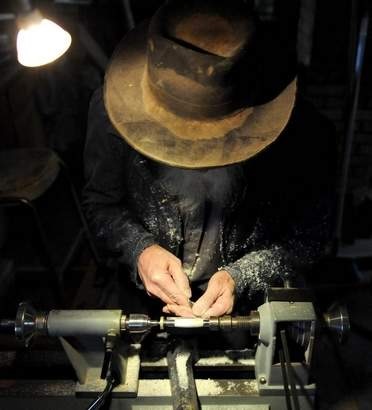
In his Baltic-area workshop, Miller produces not only deer antler and wood pens but a number of other items including earrings, dishes, and bowls. His pen output ranges from 400 to 700 per year, which are sold direct to the public by Miller and in various venues including craft shows and shops.
Miller taps a variety of sources to craft his writing implements, according to the Coshocton Tribune story:
Different types of wood and antler give distinct color and texture to the ballpoint pens. He uses native woods such as oak, but dabbles in exotic hardwoods such as buckeye burl — a favorite of guitar makers for its stylish coloring. It looks like marble or granite.
Looking at the photo gallery accompanying the article, you see prices in the $15-20 range for hickory wood pens. Surely the more exotic woods would be more expensive, as would fancier designs. A laser shop does pen personalization for Miller.
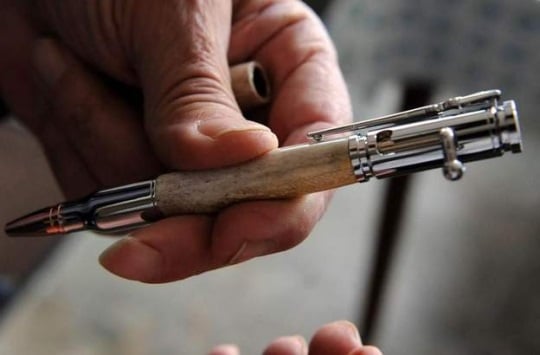
Abe Miller is the first Amish pen maker I have heard of. Among the many furniture shops and variety stores you’ll find specialty niche businesses among the Amish, such as this watch & clock restorer in New York, or this beekeeper in Missouri, or this fur buyer in Indiana.
Along those lines, we’ve got a feature upcoming on an Indiana Amish exotic leather craftsman. If you’ve ever come across an Amish-run business that struck you as unusual or unexpected, let us know in the comments below.
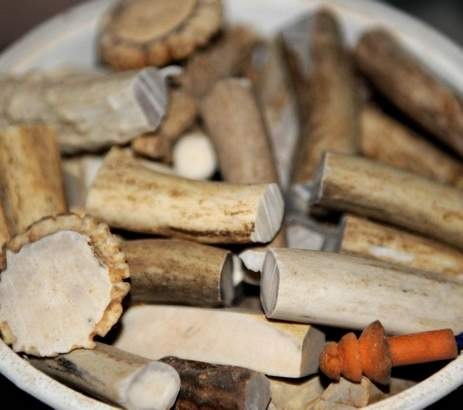
Amish origins of the deer farming industry
Interestingly, Abe Miller, who used to have his own deer farm, also played a significant role in developing the deer farming industry in the 1970s and 80s.
Miller appears in other articles by the Tribune and the Star, as does an Amish deer breeder (and a possibly-Amish-owned hunting ranch). From one article:
Deer farming was practically unheard of decades ago, and people may be surprised it was an Amish farmer, Abe Miller, in Baltic who helped get it started.
He bought two deer in 1974 and the first deer he sold went for $75. To him, it was a hobby, but the demand for the deer began to skyrocket, especially after the birth of a deer named Patrick that sold for $7,500 because of its nontypical rack.
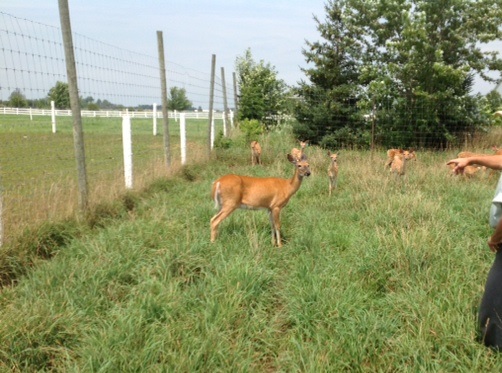
A third article elaborates on Abe’s story:
Some of Miller’s Amish neighbors wanted their own deer. The first fawns he sold went for $75 each. There was so much demand for his deer that he stopped releasing them into the wild about 1980. At first, he said, his neighbors wanted them as pets.
“At that time, most were more like myself,” he said. “They were people that loved deer and just wanted to have a few deer around.”
But they also took pride in breeding deer with big antlers.
Miller eventually bred Buster with a doe named Nanny. In 1983, Nanny had a single buck fawn that would turn Miller’s hobby — and that of others like him — into an industry that now finds itself at odds with the same wildlife agencies that permitted the breeding operations.
The deer’s name was Patrick. And his antlers grew at a shocking rate.
He sprouted 12 full points as a yearling, a time when most bucks’ antlers are little taller than their ears. A couple of years later, he sprouted nontypical points, which are regarded as rare and desirable by trophy hunters because the tines jut out at odd angles.
Tales of Patrick’s incredible rack spread to Texas, where there was a growing demand for big-bodied Midwestern bucks to breed with the slender whitetails that lived amid the mesquite trees and cacti.
“Word got around,” Miller said. “And we got a nice price for him.”
Miller received $7,500 for Patrick in 1987, when he was shipped to Texas. But Miller kept some of Patrick’s fawns.
“People would come from all over the country to buy stock from Patrick,” Miller said. “Anything they could buy, you know.”
By the 1990s prices for big breeder deer started skyrocketing. The hobby was now a full-blown industry.
Though Miller is no longer involved in deer farming, there are now around 500 such farms in the state of Ohio. As we learn in the article and accompanying video, critics of deer farming question the ethics of hunting farm-raised deer in preserves, and warn of the threat of disease spreading from captivity to the wild.
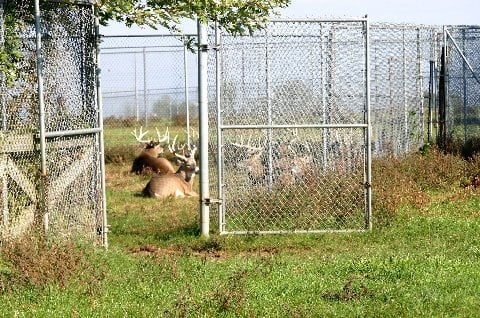
In addition to supplying “high-fence” hunting preserves and businesses like Abe’s, deer and elk farms produce venison for specialty meat sellers, elk-antler velvet for steroid-alternative sprays, and doe urine, used by hunters to attract bucks.
The rest of the article is well worth reading if you’ve ever wondered about this industry which counts a number of Amish participants (which you may have seen, especially if you’ve traveled around the larger communities).
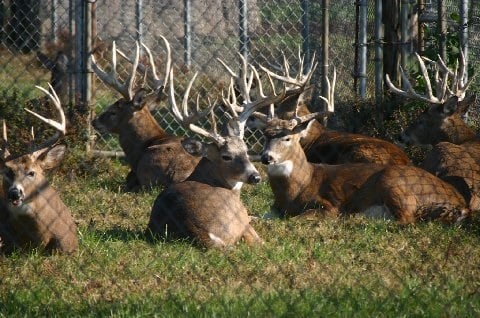
Raising deer is just another way some Amish make ends meet, as occupations have diversified away from dairy. With the prices involved for both the deer and their by-products, some are no doubt doing well at it.



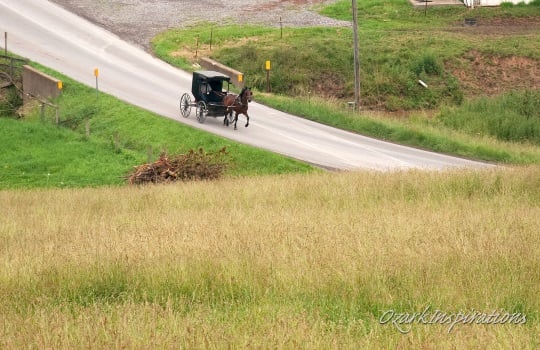
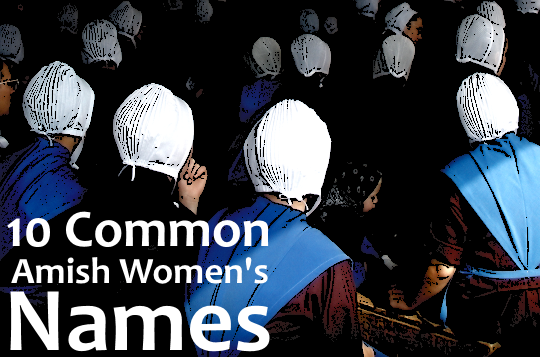
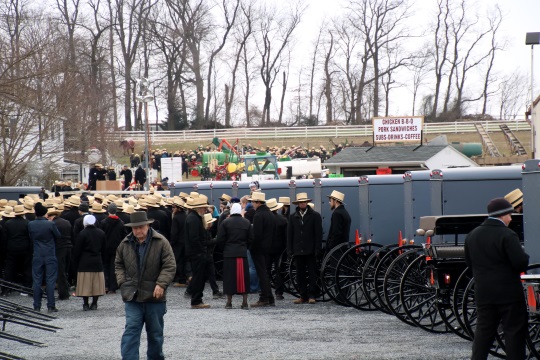
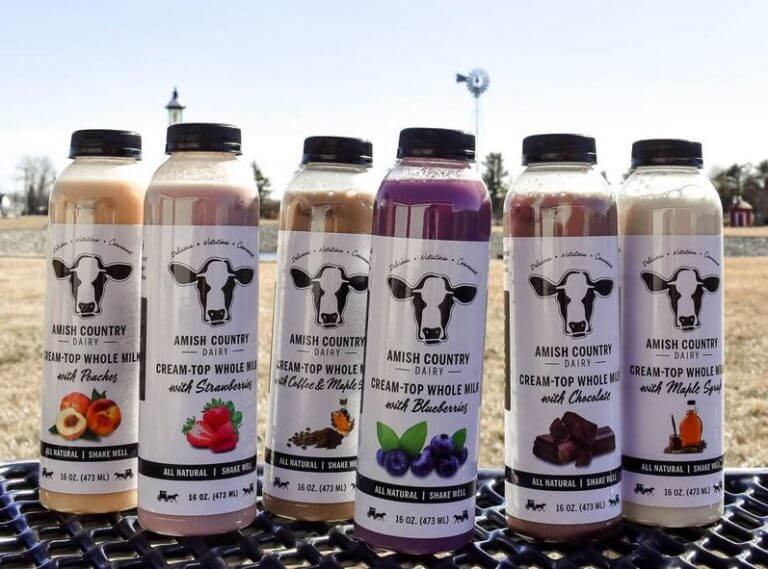
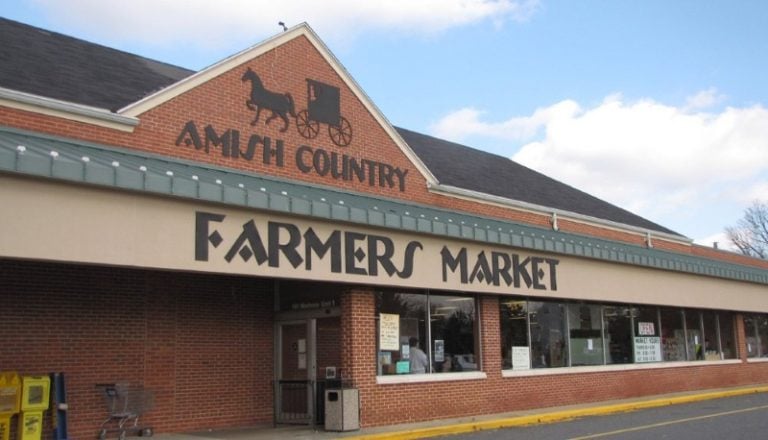
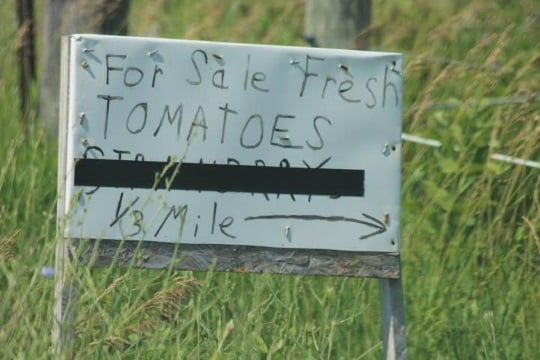
High fences
The high fence craze in Texas started, as this article noted, in the late 70’s to early ’80’s. I am not particularly a fan of the idea of hunting behind a high fence, though many of the “shooting preserves” in South and West Texas are literally tens of thousands of acres; so it is not like people are stalking captive raised deer on just a few acres.
I am more concerned about what high fences do to the ability of native free ranging deer and other wildlife to migrate as needed to find food and cover. These fences are really an obstruction when animals try to move from one range to another as seasons change, etc. Though the high fences are very good at keeping feral hogs off of your property as they are a mesh field fence design.
My wife and I were talking about this the other day and I commented that something must have changed in the past 8 to 10 years, because it use to be that people were putting up high fences left and right but you seldom see a new one being put in now. In fact a couple of them in our area have come down recently.
High-fence deer hunting - prices
Oldkat ranches of thousands of acres do sound like a different animal than the ones described in the article/video. The Clear Creek Hunting Ranch in Holmes County is only 128 acres.
Not being a hunter, their pricing was interesting to me, based on how many points each buck rates. You must show up to these places expecting to shell out thousands of dollars, even if you only get the lowest-rated buck:
http://www.clearcreekhuntingranch.com/hunting/pricing.html
Pricing:
Bucks scoring up to 139……………………..$2000.00
Bucks scoring from 140 – 149……………..$2800.00
Bucks scoring from 150 – 159……………..$3800.00
Bucks scoring from 160- 169………………$4800.00
Bucks scoring from 170 – 179……………..$5800.00
Bucks scoring from 180 – 189……………..$6800.00
Bucks scoring from 190 – 199……………..$8000.00
Bucks scoring from 200 – 210……………..$10,000.00
Bucks scoring 211 plus are individually priced.
The video attached to the third article features both detractors and supporters of high fence hunting. Someone argues that it provides a hunting option for wheelchair-bound individuals. I have a hunch by the way it’s discussed that most high fence hunters aren’t wheelchair-bound, but for those hunters I can see the value in that.
Also just added a few Amish deer farm photos above, shared by contributors, from Lancaster Co and
IllinoisIndiana.Deer sheds
Is it possible to make a deal on the sheds? Would love to buy in bulk! Please get back to me
We have a number of these types of “game ranches” or preserves here in Michigan. However the prices have come down for the hunter due to the economics of our time. This said, the fact is, very large antlered deer such as the ones seen in the photographs are very rare in the wild. Aspiring hunters (especially older ones) have the money but not the youth or time to chase wild trophies. A 210 B&C buck is a once in a life time deer and while expensive to shoot at a preserve you could easily spend that much and much more to try to find one in the wild.
I’d like to see Amish start bird hunting preserves like for pheasants and quail. It would be a natural for them especially if combined with a B&B type operation.
Thanks for a hunter’s perspective Derek. As a non-hunter I had no idea how common or rare getting bucks at the various levels might be. As far as bragging rights go, it seems there’d be a premium on being able to say you got yours in the wild. Of course maybe some hunters have something in common with the proverbial fisherman and his embellished “fish tale”.
DEER KILLINGS ARE PSYCHOTIC
ONE HAS TO WONDER AT THE PSYCHE OF THOSE WHO NEED TO GO OUT AND HAVE FUND MURDERING AND KILLING INNOCENT ANIMALS PENNED UP IN A CAGE. THAT IS NOT SPORT. THAT IS JUST PSYCHOTIC KILLING -MASS MURDER.
Well, that is a strong take.
Amish-made pens
It is surprising to me that an Amish man would make earrings.
Another Amish pen maker from 2009 can be watched for 5:14, although it may not be real clear. Toward the end of Amish Pen Making “Haiti Benefit Sale”, you can see the wooden rectangles he starts out with and the finished pens.
https://www.youtube.com/watch?v=o0rAOMpCOUU
My husband grew up the son of a professional hunter and trapper (and his brother still is today), but other than poaching the occasional young buck at one farm where the farmer kept one field sowed in winter wheat so that meat would be available during the winter for folks like my husband’s family, who literally *never* bought meat at the store (and also grew all their own vegetables, raised their own chickens, etc. — all by “renting” land from farmer friends since they lived in an admittedly small town!), they never, ever hunted animals that weren’t actually wild.
My brother-in-law still traps today, and he and his daughters always get at least one deer during hunting season, but almost all his wild animal work now is conservation work — live trapping and moving healthy animals, only actually trapping aging or unhealthy animals for their fur, to help keep the wild populations stable and healthy. I used to be utterly opposed to all hunting, but it’s hard to argue with what my BIL does. He works with the wildlife management folks to ensure that there’s good land and healthy animal populations, which is what I think we all want to see!
Derek’s suggestion of bird hunting is actually an excellent one — that’s one of the premises behind the organization Ducks Unlimited, which encourages farmers to allow small pond areas on their property to “go wild” to provide homes for wild birds. That way the hunters can still get their wild game, but the populations aren’t harmed in the process. I wonder if Ducks Unlimited has ever approached any of the Amish farmers to provide a small birding area on their property? The two groups would go hand-in-hand, I would think.
I tend to feel like Jean much of the time, though I can understand Laura’s BIL’s job in wildlife management as it pertains to keeping wildlife populations “healthy and stable.”
Yet, I feel that mankind has, for the most part (and despite “good intentions”), interfered with wildlife to their (and OUR) ultimate detriment.
I hope there are still animals left in the “wild” for my grandkids (10 mos. & 3 yrs. old) to enjoy observing and “shooting with cameras”, not ammunition.
Alice Mary
Although Jean expressed it in a different way than I would, I happen to agree that killing innocent, penned-up animals who have no say in the so-called “sport” of hunting is, well, murder. What else can you call it? And I really, really question the mentality of anyone who would enjoy taking such a life. Where is the compassion? Where is the empathy?
Meaning of "murder"
While this practice may be repulsive (I am not attracted to hunting in the least, though I don’t have any argument on principle with those who do it, wildlife management is a thing that needs doing), “murder” is by definition the killing of another human being, and has meant just that for ages.
The language we use matters and calling it murder, as I notice many are starting to do, subtly elevates animals to the level of humans. There are other descriptive terms (“slaughter”, “killing”, etc) that I think convey the meaning without twisting the language.
I also don’t think it is thoughtful of those human victims of true psychotic killers and mass murderers (to use the terms Jean uses above).
I suspect that the deer, whose life is just as important to it as my life is to me, and who is as capable of feeling pain and fear as I am, may not share your definition, Eric. I do understand your point, but I think that this species-centric vocabulary helps to justify doing unspeakable atrocities, as long as the atrocities aren’t done to humans. I think it is time we broaden our circle of compassion to include all living beings.
I do not think, however, that it is appropriate to consider those who kill to be psychotic. Psychosis is a serious mental illness, and most atrocities are not committed by psychotic individuals, but by those who lack compassion or a conscience, individuals who are otherwise considered to be “in their right mind”.
Just to clarify, it’s not “my” definition, it’s the widely accepted definition of the term found in any major dictionary, and what the word has long been understood to mean in society.
http://www.merriam-webster.com/dictionary/murder
http://dictionary.cambridge.org/us/dictionary/american-english/murder?q=murder
http://www.oxforddictionaries.com/us/definition/american_english/murder?q=murder
I take your point about the deer’s desire for self-preservation, but there is a difference between humans and animals and I believe our vocabulary is part of maintaining that.
This is not a justification of cruelty to animals (I am sympathetic to the argument that hunting is a form of cruelty particularly in cases when there is not an instant kill)…how animals are used for food and in other ways by humans is another discussion in itself. For that matter all of us who eat meat or wear animal products implicitly accept the killing of animals, even though we might not spend much time thinking about it.
I do appreciate your points about psychosis and compassion in general.
As a hunter myself, I totally like the bolt action pen (above).
As a naturalist in my own rite — having spent hours upon hours in the woods (as a hunter, trapper, and camera-jockey) — I get totally amused at the misconceptions of what goes on in nature by people who have never spent time in nature. While working in the field one day I heard an ongoing squeal…, and eventually found a field mouse that was being murdered* (via constriction) by a king snake. So now no matter what I did, I was an accessory to murder — either the murder of the mouse if I did nothing, or the murder of the snake (via starvation) if I made the snake free his meal. I don’t go for malicious cruelty to animals, don’t get me wrong; but anyone that thinking that without the hunter bambi is just going to live a long and happy life and one day peacefully slip away to that great forest in the sky — well, they don’t know Mother Nature.
*Said tongue-in-cheek. Your cited definition and explanation of murder is spot on, and the difference between humans and animals is equally accurate.
Those against deer hunting in whatever form, should bear this in mind.
Throughout the world, wildlife has always lost the war against urban development and the need for farmland, where most wildlife dies out because of the destruction of their habitat and those that don’t, are killed off being regarded as vermin.
The only wildlife that really has a chance of surviving this onslaught from humanity, are those that people regard as valuable for one reason or another and thus propagate.
Deer only need one buck in twenty to survive to form his harem. The other nineteen bucks are deer surplus.
I’m sure if the deer were asked if they would prefer to become valueless wildlife through a ban on hunting and thus face extinction through becoming classified as vermin, or if they would prefer to sacrifice their surplus bucks to hunters so that they would retain some value to humans as a species for hunting, I’m sure every single deer would vote for the hunting option.
Deer lovers mean well, but they are not buying up farmland to turn into deer preserves where does can live and reproduce, the hunters are. For without reproducing does, they have no bucks to shoot.
The continuation of the deer as a species in any great number, lies with the hunters and not the deer lovers.
A ban on deer hunting, whether natural or caged, would seriously harm their ultimate survival.
FYI – so long as we have mutant farm animals for meat, I am personally against killing Bambi, however for the sake of increasing the number of deer kept and bred in captivity, I will painfully turn a blind eye to hunters.
I will also support caged hunting over natural hunting. The caged deer have been bred to be shot, they know nothing about being free on the range and are just one step ahead of a farm animal.
The wild deer are a natural beauty and killing them destroys just a bit that natural beauty.
If caged deer selectively bred for their large antlers keep hunters away from the wild deer, then I’m sure every wild deer supports caged hunting as well.
I have to disagree with you on one point, Dirk. If wild deer weren’t hunted, they would rapidly become overpopulated for their habitat and start starving to death. I learned this many years ago from a deer-hunting coworker in Texas, where if it weren’t for hunting, there would be many, many starving deer — and this was in an area where there were vast areas of habitat for deer; they are a species that, as I’ve heard it put, are “meat on the hoof” and prey animals, intended to be eaten by predators.
Plus deer are extremely adaptable to urban areas; they’ll eat grocery store garbage as happily as their wild food. We used to have a troop of deer that tromped by our home early every morning to go feed at the grocery store next door out of their garbage! And this was in an *intensely* suburban neighborhood just north of Washington D.C.
Currently in the D.C. area, there are so many deer thriving in this urban environment that they frequently overrun, for example, the runways of airports. While I appreciate people’s desire to keep beautiful deer alive, they are intended as food for predators, of which humans are one, and frankly, when it comes to a fight between a few deer vs. an airplane full of humans, I will prefer the airplane’s survival any day.
Deer, like coyotes and raccoons and gophers, are species that not only survive living among humans but actually thrive. Their populations aren’t in danger from humans; they’re more in danger from their own breeding habits. So hunting wild deer is actually the more humane act that permits these lovely animals to live with adequate diet rather than starve themselves out to the point where they become, as a friend put it, “pestiferous,” endangering the humans among whom they live.
Thanks to my husband’s family, I’ve learned to temper my love of the beauty of deer with the realities of their existence. I suggest that those who believe humans are endangering deer populations learn some of the facts, as I did, before condemning all hunting. (And, mind you, I am a confirmed non-hunter, but I can see both sides of the issue now!)
Erik, you are quite correct that the word “murder” presently refers to killing of another human being. I don’t disagree with you. But language is dynamic, ever changing. I can no longer use the lovely word “gay” to mean happy, bright, as it has now taken on an entirely different meaning.
Many people choose to use the word “murder” to apply to the unnecessary killing of animals – especially under the guise of sport – to make the parallel that such killing is wrong, whether one is killing a human or (another) animal. Speaking of word meanings – when did the word “sport” as in “sport hunting” take on the meaning of killing a participant who DOES NOT CHOOSE TO “PLAY”? Handball, tennis, baseball, hockey, etc. are sports between CONSENTNG players. Hunting/trapping etc. is no sport for the animal.
And finally, what does it say about an individual who ENJOYS killing? Many of us look at a deer – or any of God’s creation – with admiration and respect – not with a desire to destroy. Some killing may be necessary, at times, but for any compassionate individual, it is a sad occurrence, not one to celebrate and whoop and holler about.
Lee Ann you are certainly right that language does change, however I’d argue that not all those changes are necessarily good nor to be encouraged, this being one of them.
Hunting is an activity which I have never been attracted to on a personal level, probably for similar reasons to your own–killing is unpleasant to me and so I avoid it or outsource it to other people (e.g. for the food I eat). But I think it fulfills a certain need, as pointed out in some of the comments above by Laura, Dirk and Don and so I don’t begrudge hunters as long as they are professional about how they go about it.
Lee Ann, I work in a word-related vocation, and am at times even painfully aware of the evolution of terms within the English language. You are quite right that the language and its terms are dynamic. However, I must side with Erik in the current definition of the term “murder.” The modern-day habit of warping definitions by a few agenda-driven individuals does not necessitate vocabulary retooling for the rest of us.
You ask “what does it say about an individual who *enjoys* killing?” — a reasonable question, and worthy of a reasonable answer. Have you ever had a fly that annoyed the stew out of you…, and then relished the moment when you finally “dispatched” it with the fly swat? Or gave an “A-Ha — gotcha!” cry when stomping the cockroach that ran out from under your kitchen sink? Have you ever taken medicine to kill something that had made you sick from some “bad” food that you ate or a parasite that you got? All of these are “enjoyable”…, yet all involve killing. A fly or cockroach is no less a life than a deer…, unless one would be so bold as to assume that cuteness makes one life more valuable than the life of an ugly creature. Anyway, the enjoyment is not in the killing itself, but in accomplishing one’s goal. Stopping the pestiness is the enjoyable goal accomplished in killing the fly. Cutting down on germs is the enjoyable goal experienced in killing the roach. Shooting game is enjoyable in the same way — and for various reasons for various people. It’s the joy of putting meat on the table for many; it’s the joy of being self-proficient (to a degree) for others. The list goes on…, but it’s not the kill per se that is the enjoyment. I know a *whole* lot of hunters, and not a single one of them are driven by bloodlust. And if all life is truly meaningful, then one will find no more fault in the enjoyment that is somehow related to killing a deer than he/she will find in swatting a fly or stomping a bug.
^ self-*sufficient*…, not proficient. (Oops)
Don,
I can truthfully say that I feel no pleasure in killing a fly, or a mosquito even, although I must admit to having killed both, though rarely. And I catch household spiders in a jar and release them outside.
And, having personally known a hunter – my brother – I know that, although he didn’t talk much about bloodlust, he did enjoy getting his trophies (even though he did use the meat). He was proud of the bear skin he had hanging on the wall – a bear that “inttruded” on his camp even though he was the intruder in the northern home of the bear. But we all felt some pleasure at the quick demise of the bear by my brother, when we learned that it had previously been shot, but didn’t die, and would have been in excrutiating pain – another problem with hunting. I don’t think all hunters are rotten people – certainly I loved my brother and found so much good in him. But I am also aware that, shortly before his death, he confided that he had lost his interest in killing. I see that as growth, and I am proud of him for that and more – but not for the hunting.
And now, enough said. I don’t need the last word, and will say no more on the subject.
Lee Ann
Amish
To settle a debate at home, are the people that own this ranch truly Amish? What percentage of these deer ranch’s would you say own these ranch’s? Do the Amish slaughter these deer? I have been told that the Amish own 500 or more of these farms.The other debate was about the puppy mills, what percentage do you think the Amish have puppy mills.?
Have any Amish ranched Raindeer???
Many of the northern natives of Nordic countries, Asia, Russia. & N. America have ranched raindeer. From my reading they would seem a much better choice in that the not only proving milk & meat but can pull carts, be ridden like horses, & Plow fields. They say the milk is as better for you & healing much as camels milk. They are a more compact animal than horses or cattle & are supposed to have greater stamina. I went to a local draft weight pull competition years ago that had a demonstration with raindeer. They are surprisingly stronger than they look & cometative with those draft horses. I know Amish that have tried getting the camels for three milk. But wouldn’t raindeer be a better alternative considering all their other uses???